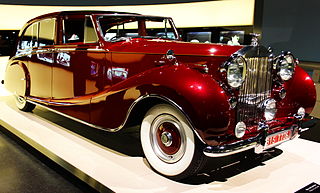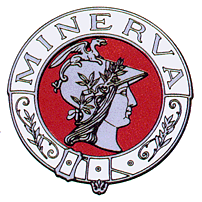Simplex may refer to:
Simplex may refer to:
Steganography is the practice of representing information within another message or physical object, in such a manner that the presence of the information is not evident to human inspection. In computing/electronic contexts, a computer file, message, image, or video is concealed within another file, message, image, or video. The word steganography comes from Greek steganographia, which combines the words steganós, meaning "covered or concealed", and -graphia meaning "writing".

In geometry, a simplex is a generalization of the notion of a triangle or tetrahedron to arbitrary dimensions. The simplex is so-named because it represents the simplest possible polytope in any given dimension. For example,
In mathematics, Pascal's triangle is a triangular array of the binomial coefficients arising in probability theory, combinatorics, and algebra. In much of the Western world, it is named after the French mathematician Blaise Pascal, although other mathematicians studied it centuries before him in Persia, India, China, Germany, and Italy.

A communication channel refers either to a physical transmission medium such as a wire, or to a logical connection over a multiplexed medium such as a radio channel in telecommunications and computer networking. A channel is used for information transfer of, for example, a digital bit stream, from one or several senders to one or several receivers. A channel has a certain capacity for transmitting information, often measured by its bandwidth in Hz or its data rate in bits per second.
Vector most often refers to:
Continental may refer to:

A luxury car is a car that provides above-average to high-end levels of comfort, features, and equipment. Often more expensive materials and surface finishes are used, and buyers expect better build quality. The usually higher pricing and more upscale appearance is often associated with higher social status of the users, compared to low and mid-market segment cars.

In mathematics, Sperner's lemma is a combinatorial result on colorings of triangulations, analogous to the Brouwer fixed point theorem, which is equivalent to it. It states that every Sperner coloring of a triangulation of an -dimensional simplex contains a cell whose vertices all have different colors.

Minerva was a Belgian firm active from 1902 to 1938 and a manufacturer of luxury automobiles. The company became defunct in 1956.

Wanderer was a German manufacturer of bicycles, motorcycles, automobiles, vans and other machinery. Established as Winklhofer & Jaenicke in 1896 by Johann Baptist Winklhofer and Richard Adolf Jaenicke, the company used the Wanderer brand name from 1911, making civilian automobiles until 1941 and military vehicles until 1945.
Chase or CHASE may refer to:
Smith & Mabley was an American veteran era importer of European automobiles and produced the American C. G. V. automobile in 1902, and the S & M Simplex automobile from 1904 to 1907, in New York City.
Olivia MFSK is an amateur radioteletype protocol, using multiple frequency-shift keying (MFSK) and designed to work in difficult conditions on shortwave bands. The signal can be accurately received even if the surrounding noise is 10 dB stronger. It is commonly used by amateur radio operators to reliably transmit ASCII characters over noisy channels using the high frequency (3–30 MHz) spectrum. The effective data rate of the Olivia MFSK protocol is 150 characters/minute.

The Lozier Motor Company was a brass era producer of luxury automobiles in the United States. The company produced automobiles from 1900 to 1918, in Plattsburgh, New York and from 1910, at Detroit, Michigan.

Daimler-Motoren-Gesellschaft was a German engineering company and later automobile manufacturer, in operation from 1890 until 1926. Founded by Gottlieb Daimler (1834–1900) and Wilhelm Maybach (1846–1929), it was based first in Cannstatt. Daimler died in 1900, and their business moved in 1903 to Stuttgart-Untertürkheim after the original factory was destroyed by fire, and again to Berlin in 1922. Other factories were located in Marienfelde and Sindelfingen.

In electrical engineering and computer science, Lloyd's algorithm, also known as Voronoi iteration or relaxation, is an algorithm named after Stuart P. Lloyd for finding evenly spaced sets of points in subsets of Euclidean spaces and partitions of these subsets into well-shaped and uniformly sized convex cells. Like the closely related k-means clustering algorithm, it repeatedly finds the centroid of each set in the partition and then re-partitions the input according to which of these centroids is closest. In this setting, the mean operation is an integral over a region of space, and the nearest centroid operation results in Voronoi diagrams.

The IBM 2741 is a printing computer terminal that was introduced in 1965. Compared to the teletypewriter machines that were commonly used as printing terminals at the time, the 2741 offers 50% higher speed, much higher quality printing, quieter operation, interchangeable type fonts, and both upper and lower case letters.

Gräf & Stift was an Austrian manufacturer of automobiles, trucks, buses and trolleybuses, from 1902 until 2001, latterly as a subsidiary of MAN. It was founded in 1902 by the brothers Franz, Heinrich and Karl Gräf, and the investor, Wilhelm Stift. Before the Second World War, the company was a well-known manufacturer of luxury automobiles, including the Double Phaeton that carried Archduke Franz Ferdinand and his wife, Sophie, when they were assassinated in Sarajevo in June 1914. By the 1930s Gräf & Stift had begun making trucks and buses, and it ceased car manufacturing in 1938. The company merged with Österreichische Automobil Fabriks-AG (ÖAF) in 1971, becoming ÖAF-Gräf & Stift AG, and later the same year was taken over by MAN AG. It continued in business as a subsidiary of MAN, and the Gräf & Stift name remained in use as a MAN brand for the Austrian market and for trolleybuses until 2001, when ÖAF-Gräf & Stift AG was renamed MAN Sonderfahrzeuge AG. It was located in Vienna, and the production facilities continue in use there, but no longer using the Gräf & Stift name.
KeeLoq is a proprietary hardware-dedicated block cipher that uses a non-linear feedback shift register (NLFSR). The uni-directional command transfer protocol was designed by Frederick Bruwer of Nanoteq (Pty) Ltd., the cryptographic algorithm was created by Gideon Kuhn at the University of Pretoria, and the silicon implementation was by Willem Smit at Nanoteq Pty Ltd in the mid-1980s. KeeLoq was sold to Microchip Technology Inc in 1995 for $10 million. It is used in "code hopping" encoders and decoders such as NTQ105/106/115/125D/129D, HCS101/2XX/3XX/4XX/5XX and MCS31X2. KeeLoq is or was used in many remote keyless entry systems by such companies as Chrysler, Daewoo, Fiat, GM, Honda, Toyota, Volvo, Volkswagen Group, Clifford, Shurlok, and Jaguar.

Rainier Motor Car Company was an American automobile manufacturer founded in 1905 by John T. Rainier in Flushing, New York and from 1908 produced in Saginaw, Michigan. The company specialized in manufacturing large and luxurious automobiles. In 1909, the company was bought by General Motors who maintained the brand until 1911.